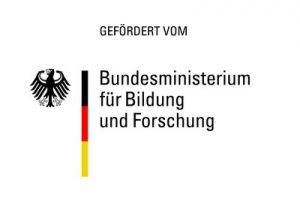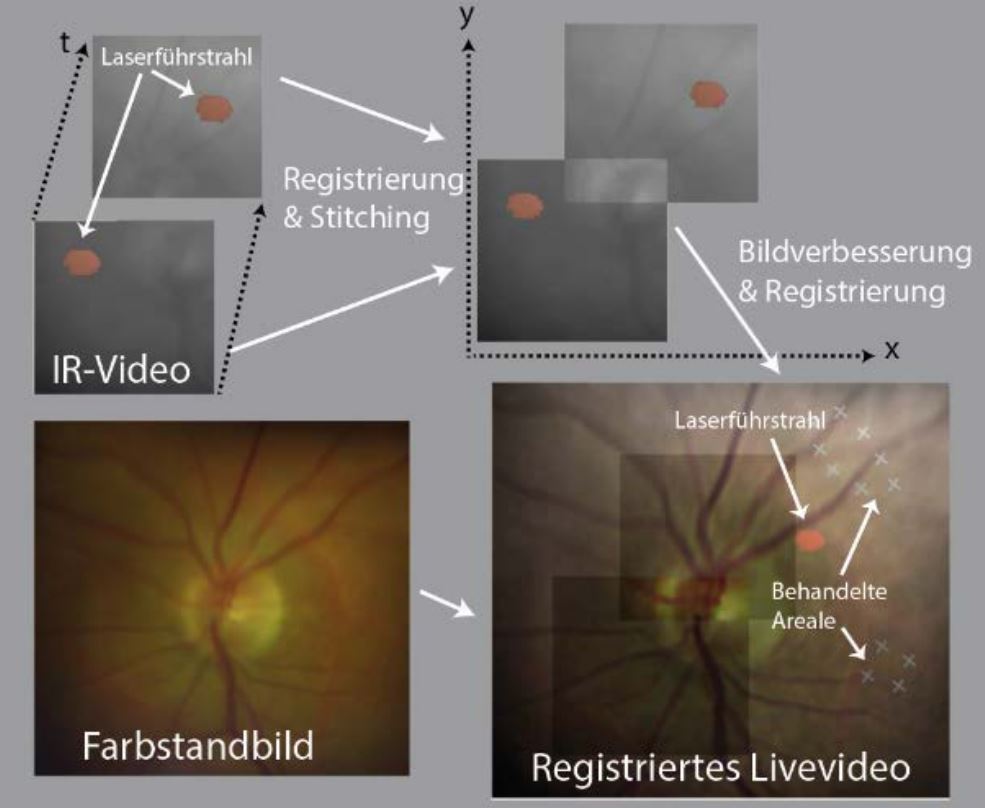Public projects
RegiLas
Real-time registration and tracking at the gentle Retinal laser therapy
Gentle treatment of diabetic macular disease
In Germany there are currently more than 6 million diabetics with an increasing incidence (2012: approx. 5.9 million diabetics, corresponding to 7.2% of the population). Most diabetics (90% after 20 years of diabetes) develop retinal disease (diabetic retinopathies) over time. In about 20% of the patients it comes to swelling (edema) of the central retina (macula), which slowly but surely lead to vision loss and untreated to blindness.
The current standard therapy consists of injecting drugs directly into the patient’s eye to reduce retinal swelling caused by vessel leakage of the retinal vessels. Since this therapy works only as long as the drug is present in sufficient concentration in the eye, it must be repeated permanently, typical are approx. 5-7 injections per year. Since a single injection costs about € 1,500, the mental burden of patients, who often postpone the ideal time of reinjections, adds up to a huge financial burden on the healthcare system, costing well over € 1 billion a year.
On the other hand, initial studies have shown that mild laser irradiation can affect disease progression and reduce edema formation. However, in contrast to the usual laser coagulation, these weak radiations are so mild that the ophthalmologist does not see the tissue effects on radiation. However, lack of visual control makes the treatment itself and subsequent verification of treatment success extremely difficult.
Real-time visualization of non-visible laser therapy
In order to address this problem of missing visualization, a system is to be realized in this research cooperation, which enables the visualization of the effects. For this purpose, a stereoscopic ophthalmoscope is first to be set up, which can be placed on a standard laser treatment unit (laser slit lamp) and records a permanent image of the retina in the infrared spectral range, so that neither doctor nor patient is thereby irritated. Software will be implemented, which captures the eye and the treated sites on the retina during laser therapy. The already applied lesions are shwone to the doctor during treatment simultaneously.
At the same time an overview map is created during the treatment, which serves as a control in later investigations. For therapy, a temperature-controlled treatment laser module is realized. This guarantee the same stimulation temperature, previously preselectable by the physician, during the whole retinal irradiation, no matter how strong the light transmission of the individual eye and the pigmentation of the retina at the treated site is. All partners realize a functional demonstrators that is clinically tested in a pilot study. By means of electroretinographic examinations before and after treatment a regeneration of the retina can be evaluated objectively, in addition to the patient’s vision.
Paper:
Baade A, Power-controlled temperature guided retinal laser therapy. J Biomed Opt. 22, 2017
Proceedings:
Abbas H, Toward feedback temperature control for retinal laser treatment: Proc. SPIE vol EB106; 2019


